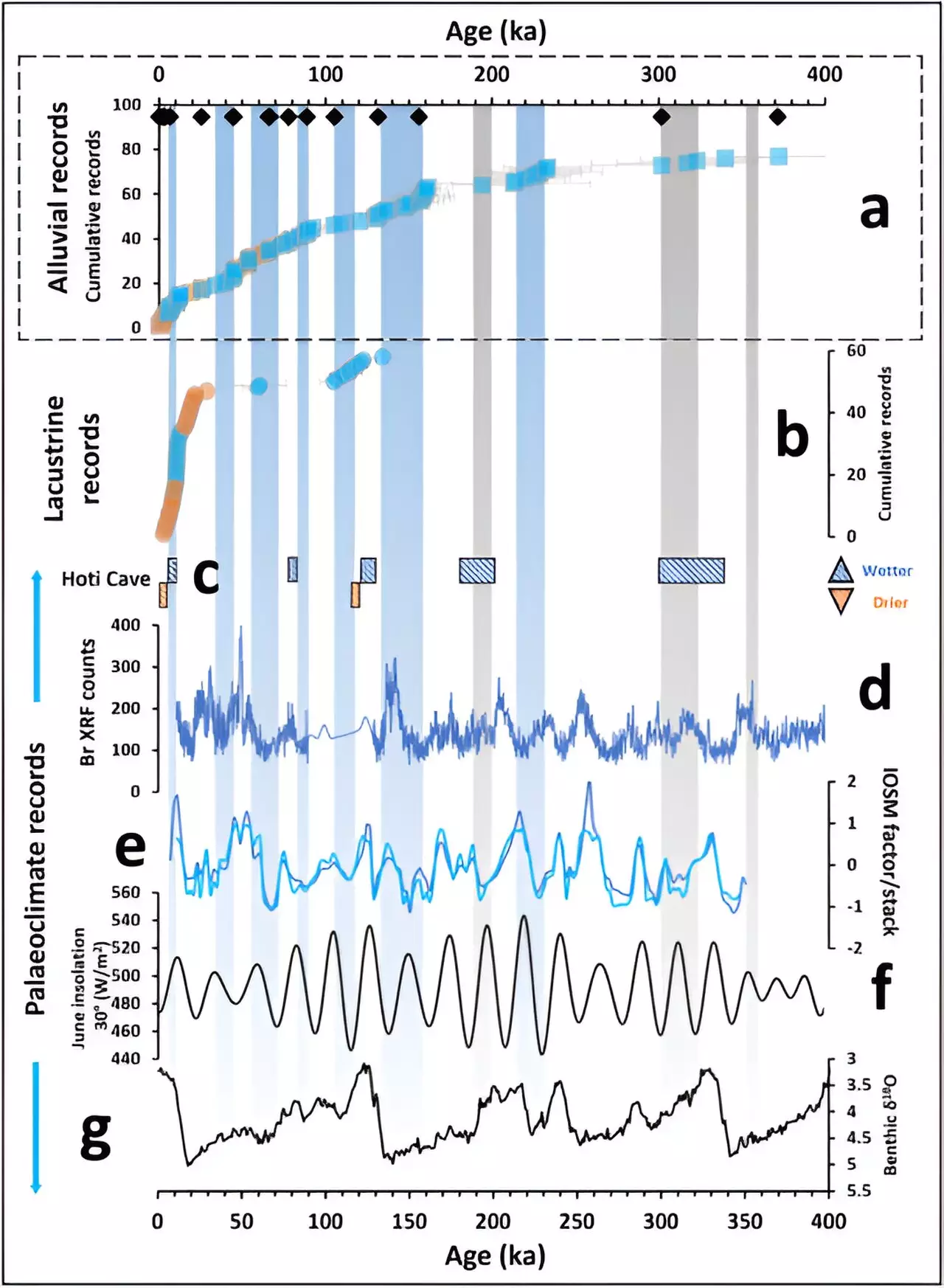Alluvial fans, which are sediment deposits formed by erosion and transportation of sediment in rivers, play a crucial role in shaping Earth’s topography. The process of alluvial fan development involves the deposition of silt, sand, and gravel at the mouth of the river as the water velocity decreases. Monsoons, seasonal climate phenomena characterized by extreme wet and dry conditions, can significantly influence the development of alluvial fans by affecting catchment erosion and sediment transport. Additionally, Earth’s orbital cycles, including precession and eccentricity, have been found to impact the development of alluvial fans. This article examines new research published in Quaternary Science Reviews that explores the relationship between alluvial fan sedimentation, monsoon rainfall patterns, and Earth’s orbital cycles.
The study, conducted by Dr. Sam Woor and colleagues from the University of Oxford, focused on alluvial fans in the arid Hajar mountains of south-east Arabia. The researchers collected samples from various sites, including mountain-front fans (bajadas) and valley infills. The samples were treated with acids to remove carbonates and organic material, and medium-coarse quartz grains were isolated for further analysis. The technique of optically stimulated luminescence was used to determine the ages of alluvial aggradation, which relies on measuring the light emitted by quartz crystals when exposed to stimulated light in the laboratory.
The researchers found a connection between grain size and climate patterns. Coarse conglomerates embedded in a finer matrix were indicative of high rainfall events during the Indian Ocean Summer Monsoon, while fine silt-sand and laminations coincided with times of ephemeral flow. Ten periods of sustained hydrological activity were identified, corresponding with both precession and eccentricity peaks. The results suggest that physical weathering of the landscape occurs during arid conditions between monsoon events, with heavy rainfall mobilizing the sediment and depositing coarser-grained sediments in alluvial fans.
The research also highlighted the impact of Earth’s orbital cycles on alluvial fan development. The precessional cycle, which occurs over approximately 23,000 years, caused seasonal contrasts to be more extreme in one hemisphere compared to the other. This resulted in thick floodplain deposits during high rainfall events. Additionally, interglacial periods occurring on 100,000 year cycles increased sea surface temperature and the abundance of water vapor in the atmosphere, leading to enhanced precipitation. The combination of these orbital cycles greatly influenced Earth’s climate, with even small increases in rainfall having a significant impact on drainage networks.
Overall, this research offers valuable insights into the climate variability of an arid region during the Quaternary period. It demonstrates the complex interactions between monsoons, orbital cycles, and alluvial fan development. By studying the sedimentation patterns in alluvial fans, scientists can gain a better understanding of past climate conditions and the factors that drive environmental change. This knowledge is particularly important in the context of climate change, as it helps us to predict and adapt to future changes in Earth’s climate.
The study conducted by Dr. Sam Woor and colleagues sheds light on the relationship between monsoons, orbital cycles, and the development of alluvial fans. The research highlights the impact of monsoon rainfall patterns on sedimentation, with coarse sediment deposits indicating high rainfall events and fine sediment deposits associated with ephemeral flow. Furthermore, Earth’s orbital cycles, including precession and eccentricity, played a significant role in driving climate variability and influencing the formation of alluvial fans. This research provides valuable insights into the past climate conditions of an arid region and underscores the importance of considering large-scale factors in understanding local environmental conditions.


Leave a Reply